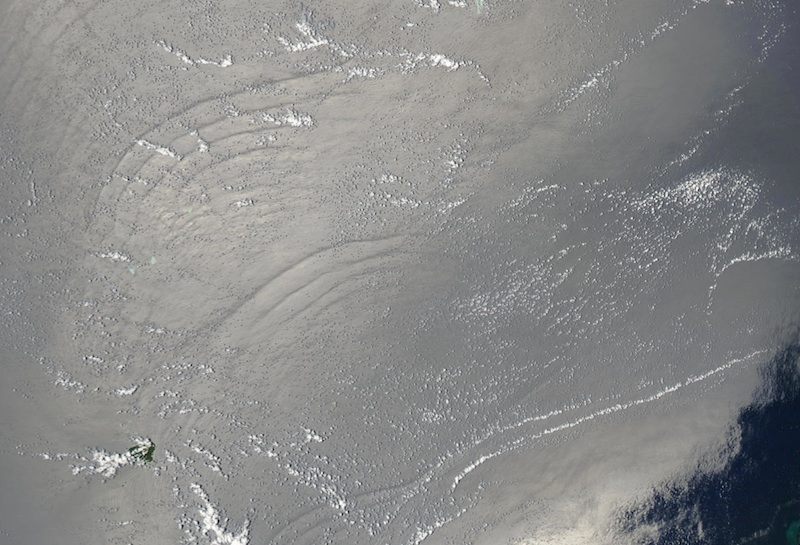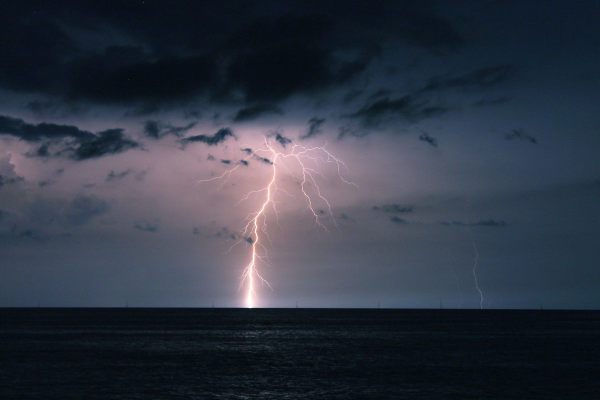Some of the Ocean’s Strongest Waves Are Invisible to the Human Eye

Human eyes can barely detect internal waves; NASA satellites captured these, in the Sulu Sea, not far from the Luzon Strait. (Photo: Jacques Descloitres/NASA GSFC)
North of the Philippines and south of Taiwan, there are 160 miles of ocean where some of the strongest waves in the world are born. On the surface, though, the Luzon Strait looks like any other stretch of water. These monster waves lie underneath the ocean’s surface—and are mostly invisible to the human eye.
But the “internal waves,” as they’re called, are so powerful that they can affect the entire climate of the planet—which is why an international team of scientists has been attempting to learn more about them. In a new study, published today in Nature, these scientists report that they were able to measure the shape and size of the Luzon Strait’s waves. They discovered waves measuring more than 650 feet high, and turbulence more than 10,000 times stronger than what’s usually found in the open ocean.
“What is special about Luzon Strait is that, first, the tidal currents are very strong, and, second, there are two ridges, spaced by exactly the right distance, such that waves created at one ridge reinforce the waves created at the other,” says Matthew Alford, the study’s lead author and a professor at UC-San Diego’s Scripps Institution of Oceanography. Here’s what that would look like, if we could actually see the waves:
A simulation of the Luzon Strait’s internal waves. (Courtesy of US Office of Naval Research, NSF, Sixth Man Productions & Edgeworx Productions)
The Luzon Strait has been studied for years, but the “extremely challenging operating conditions” (as Alford and his colleagues put in their paper) had kept anyone from truly understanding the strait’s internal waves. In this area of the world, there are frequent typhoons and strong monsoon winds—most of the study’s field work had to take place between April and July, between monsoon and typhoon seasons, says Alford. Plus, there are strong currents—some caused by the waves themselves, which can switch directions quickly—that put the scientists’ gear at risk.
Internal waves are nothing to mess with. For millennia, seafarers reported strange phenomena—the Vikings called it “dead water”—that today sound like the effects of internal waves, and in the 1830s an engineer named John Scott Russell tracked one through a Scottish canal. That one was generated by a boat—a barge brought quickly to a halt—but internal waves have also stopped ships in their tracks, as one Norwegian explorer experienced in 1893. That’s how we know about them to begin with.
Internal waves come from tides moving across the rough topography of the ocean floor or from the winds blowing on the surface of the sea. And once they’ve formed, they can last for hours and travel thousands of miles from their source. They carry with them nutrients that keep whales and coral reefs alive, pollutants that contaminate places far from their source, and, perhaps most importantly, heat. They’re important enough to the planet’s climate that by better understanding them, scientists will be able to create more accurate models—and better predict what the future looks like as the world gets steamier.
























Follow us on Twitter to get the latest on the world's hidden wonders.
Like us on Facebook to get the latest on the world's hidden wonders.
Follow us on Twitter Like us on Facebook